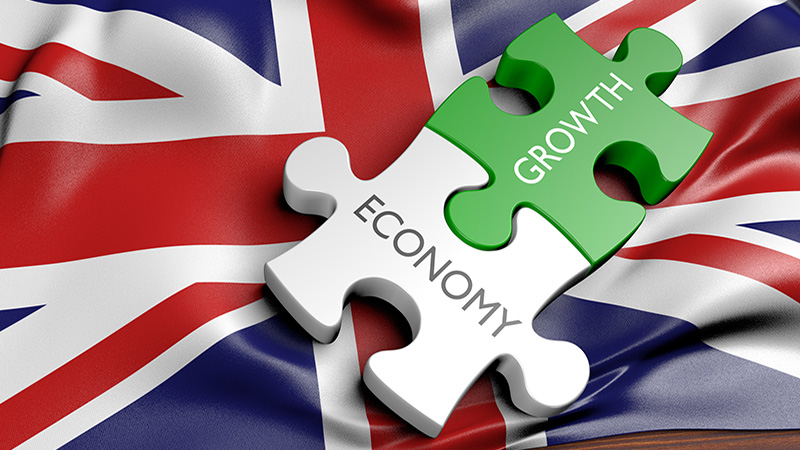UK GDP stagnated through the months of July to September after experiencing a 0.2% increase in the previous quarter according to the Office for National Statistics (ONS).
While there was an estimated single percentage point fall in output throughout the services sector, there was a 0.1% increase in construction output. Commentators noted that the pressure of high interest rates could likely be the cause of struggles in the services sector as households are forced to cut back.
Compared to Q3 in 2022, GDP has increased by an estimated 0.6% and the implied GDP inflator, a measure which compares current dollar value to its real value, rose by 7.9%, due to a fall in the implied price of imports.
Month to month, UK GDP is estimated to have fallen 0.6% in July before increasing by 0.1% in August and 0.2% in September.
See also: UK economy ekes out growth in August but not enough to prompt more rate rises
Abhi Chatterjee, chief investment strategist at Dynamic Planner, told Portfolio Adviser: “The UK continues to lag major developed economies in terms of growth. While the figure was better than was expected, it poses challenges to the incumbent government and its leaders.
“It appears that high interest rates have started having an impact on the economy, slowing down the pace of activity. ONS figures show a drop in capital spending and business investment, which are key indicators of economic well-being of the nation.
“There has also been a drop in household expenditure, a trend which is consistent with the cost-of-living crisis. This is, and will continue to have, a significant impact on the services sector.”
Michael Field, Europe market strategist at Morningstar, also reflected that high interest rates were starting to “bite” for families and businesses, affecting areas like the service industry in a way which seems unlikely to change in the near future.
“The important thing here is that the UK economy is in the black, and flat growth quarter on quarter means that the UK will not enter a technical recession in 2023,” Field said.
“Manufacturing usually takes the rap for slow economic growth in the UK, and rightfully too in many ways. Manufacturing activity, shown by manufacturing PMIs, has been in decline since the middle of 2022. With manufacturing contributing less than 20% to GDP however, this is just part of the problem.
“The bigger issue lies with the service industry, which contributes almost 80% of GDP, and accounts for almost the same percentage in employment. Here, a large pullback in spending over the last 18 months by both businesses and consumers has hurt the economy. The somewhat bright news however is that service output rose by 0.2% in September, following a 0.7% fall in August.”
Jeremy Batstone-Carr, European strategist at Raymond James Investment Services, added: “There is a glimmer of encouragement in today’s trade data. Export volumes rose more than import activity, supported by the sterling’s resilience against trading counterparts.
“Although the Bank may have concluded its rate hiking programme, the lagged impact of monetary policy tightening will continue to impart downward pressures on economic activity in the months to come. The Bank will not drop its guard until inflationary pressures are long gone – likely well into 2024.”







